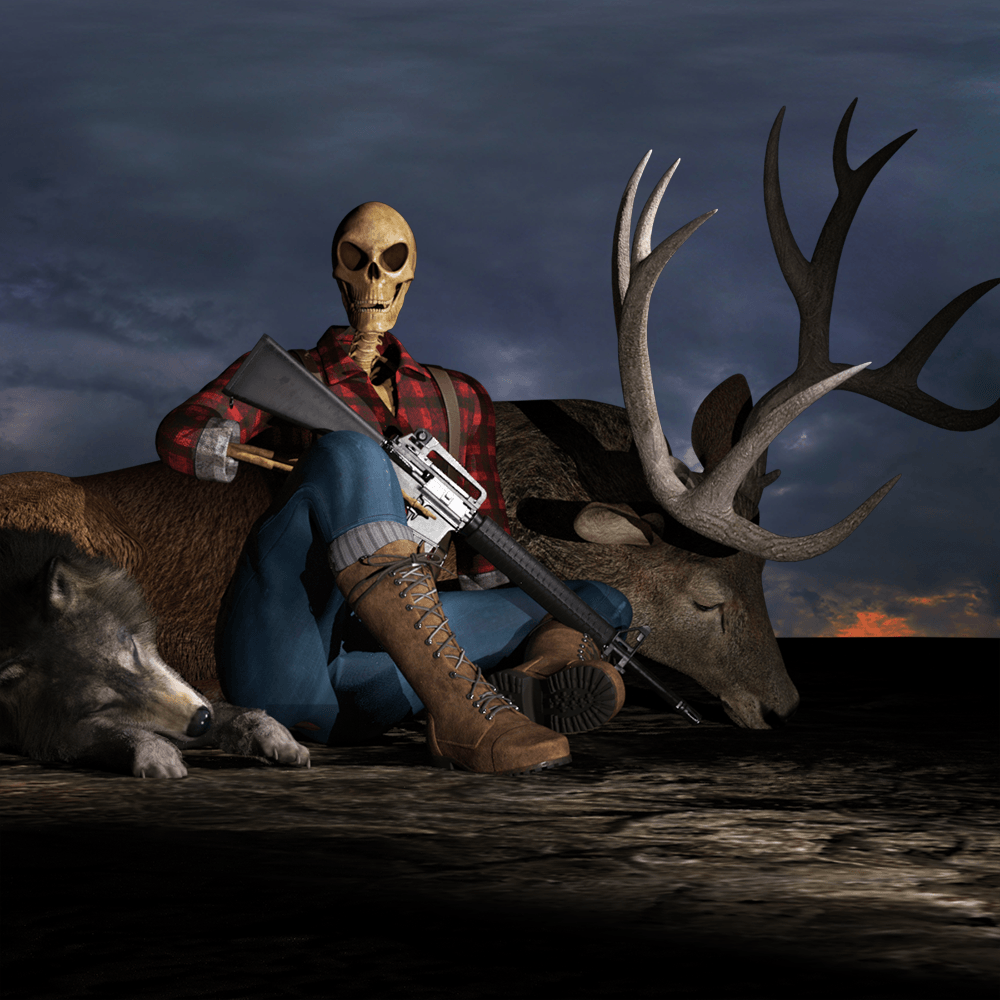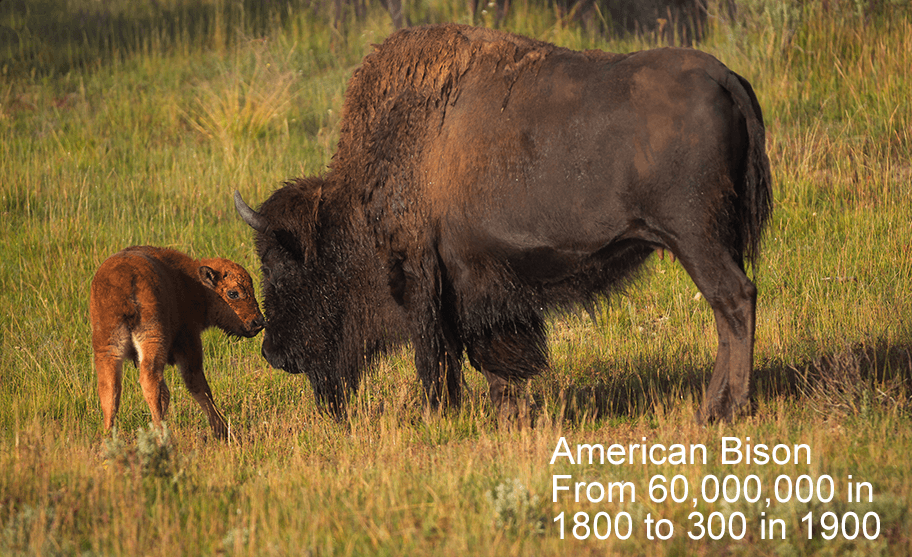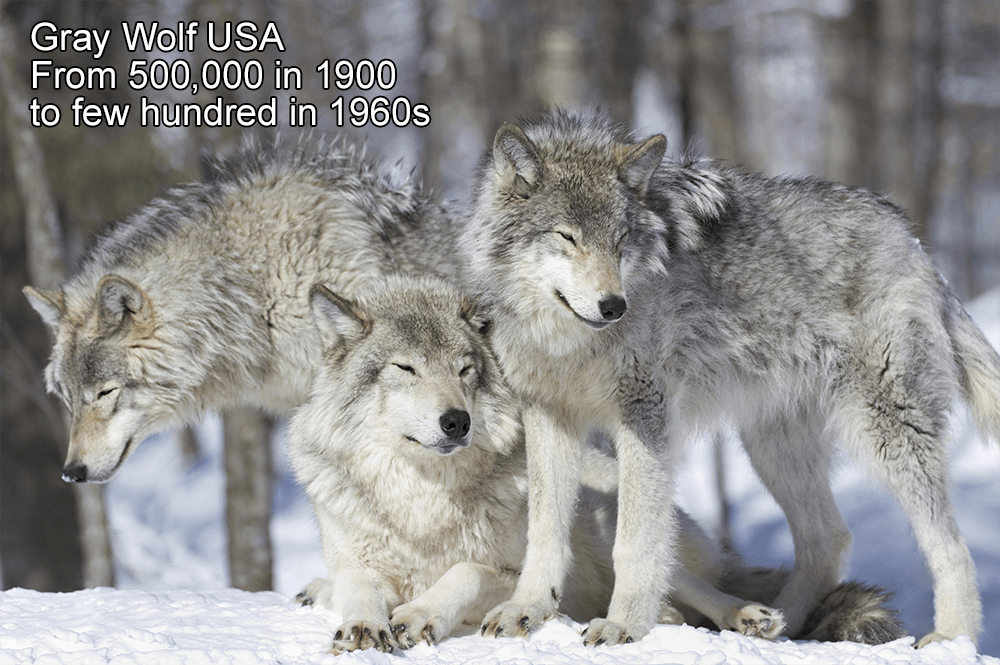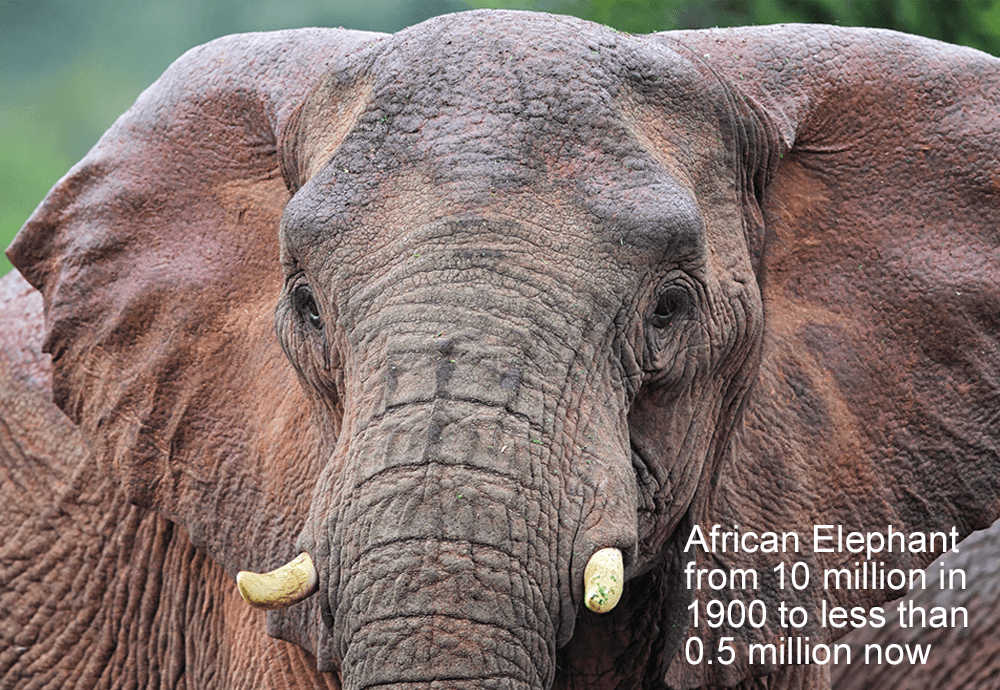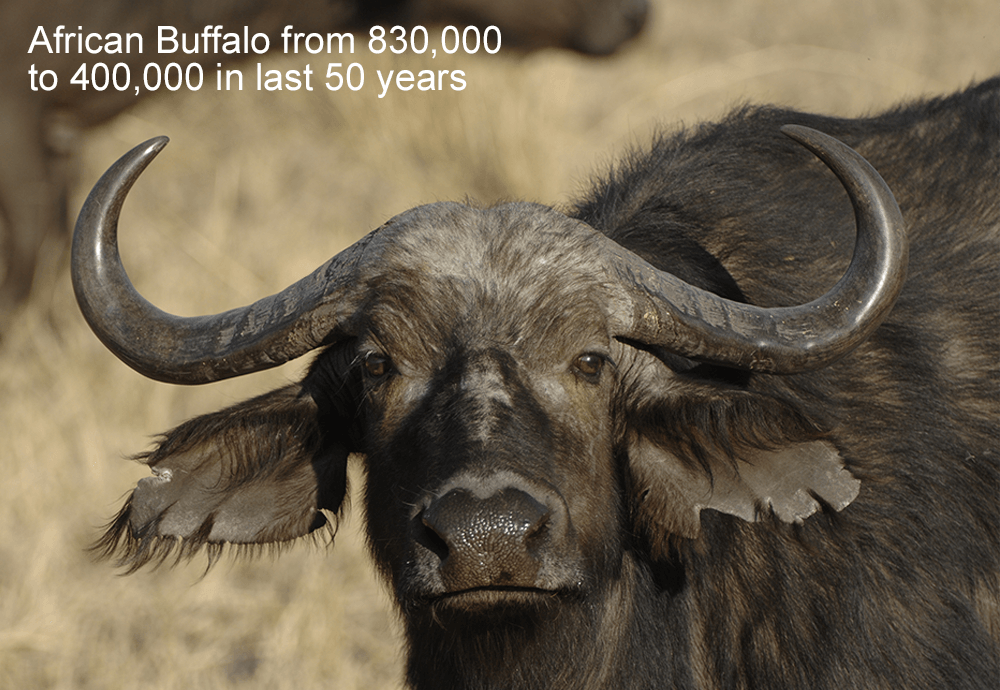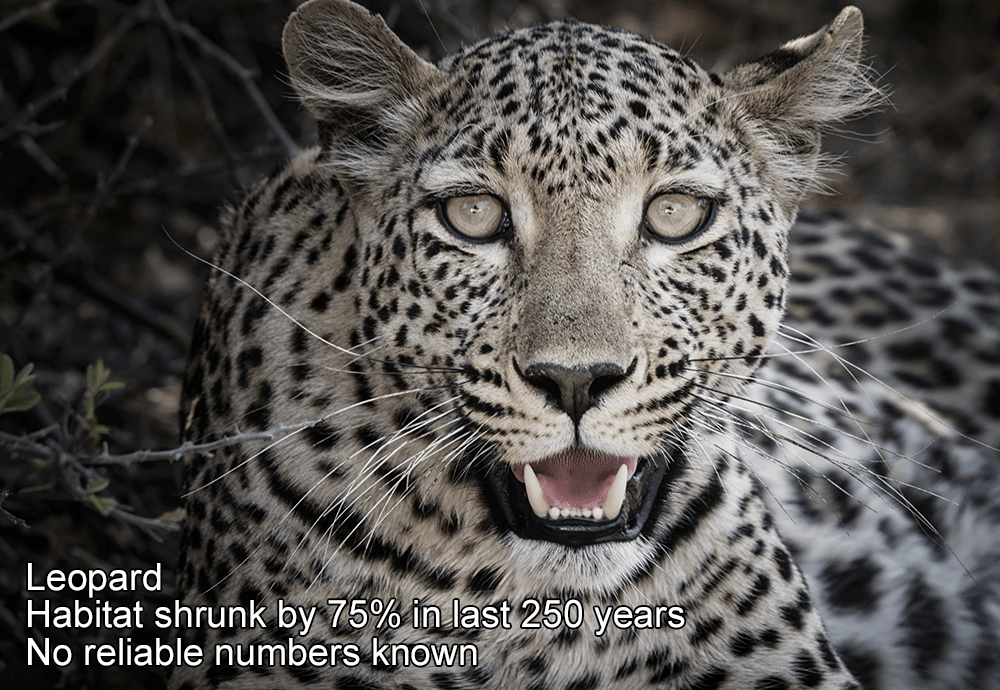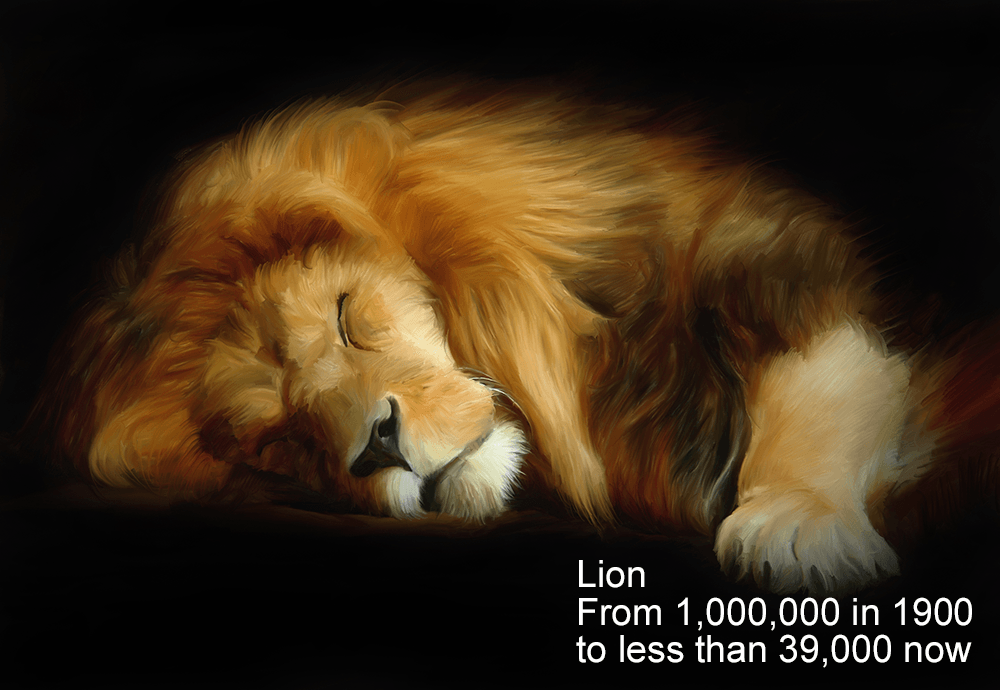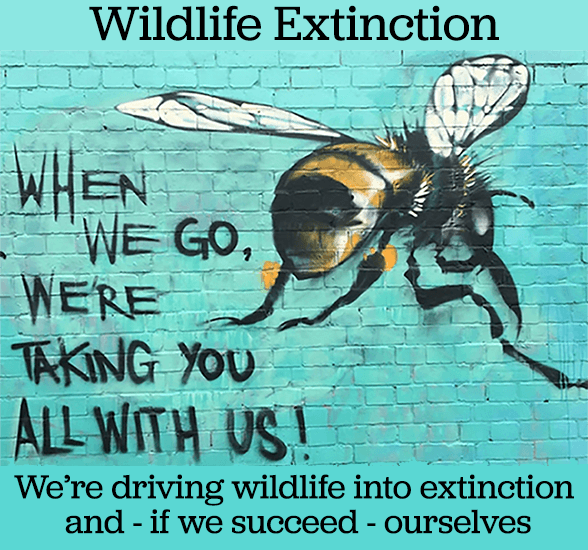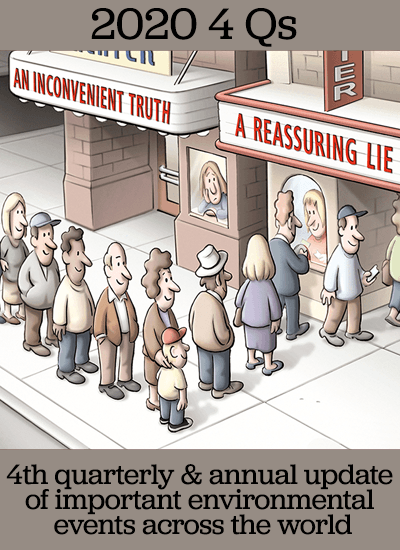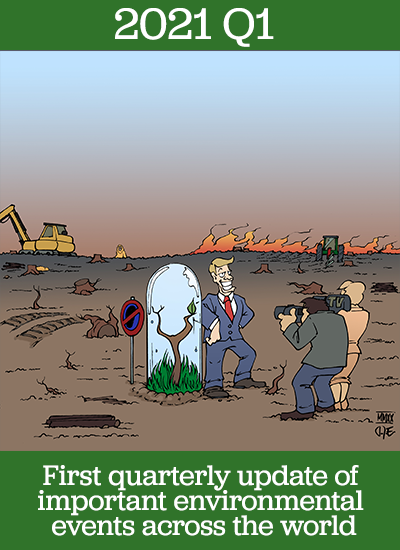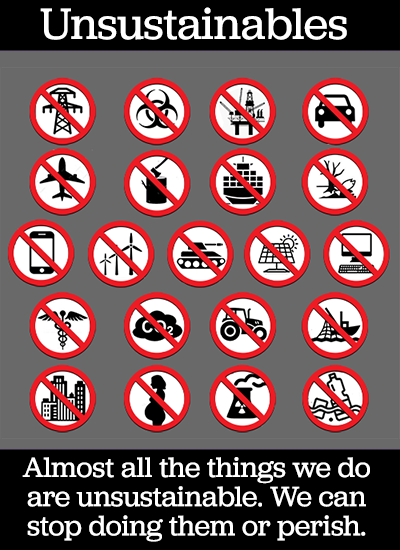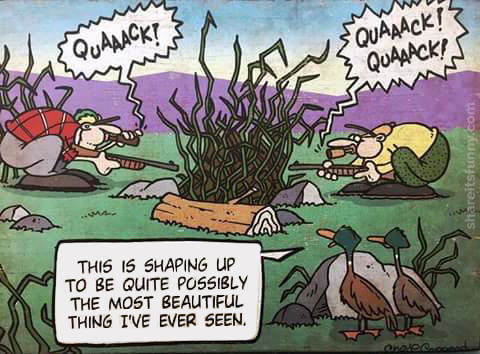Recreational hunting and the environment
Most forms of hunting are outdated relics from the past. Wild animals are no longer a sustainable source of food. There are not enough left. If we started eating them on a global scale, they would all be gone very soon.
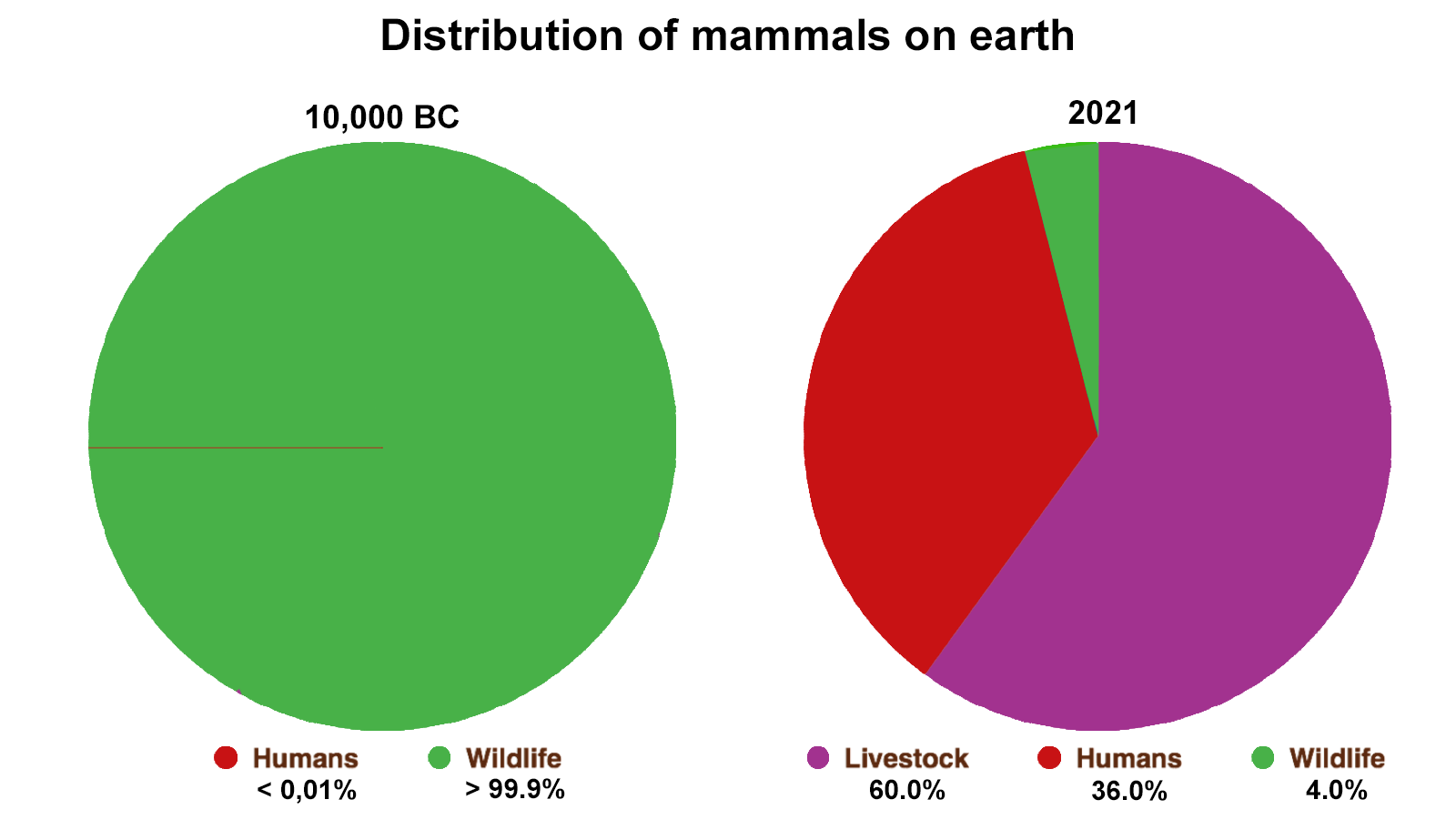
Some hunters claim that they make positive contributions to conservation by managing the numbers of certain animals. That is not true.
The management of wildlife populations can be complicated, although the basics are simple. In a healthy ecosystem animal populations are kept in check by nature itself. It has done so for hundreds of millions of years with spectacular success. By contrast, we humans have messed up the natural world completely in a few hundred years.
The numbers of all wild animals depend first and foremost on the carrying capacity of their habitats, mainly the availability of food and water, which determine how many animals can live there.
If the number of animals is less than the maximum, they thrive and multiply until there are too many. Then the weaker animals die or don’t breed and the number of animals goes down again.
Predators play a vital role in this process by selecting the sick, the weak and the old. Having done that, those predators find it harder to catch the remaining prey animals because they are dealing with fitter individuals, so their numbers also go down, keeping the whole system balanced, with some annual fluctuations.
Things become complicated if this balance is disturbed and there appear to be too many animals of a certain species. This may have many causes. To understand the problem it must be studied by professionals with expert knowledge of ecology, wildlife, habitats and ecosystems.
Recreational hunters don’t have that knowledge. It does not interest them either. They have been around for thousands of years and yet they have contributed little or nothing to our knowledge and understanding of the natural world. They just want to hunt. Only in the middle of the 20th century did biologists begin to study wild animals in earnest.
Even if the recreational hunter could be properly educated, he is still heavily biased in favor of shooting. He is obviously not going to look for alternatives that make him redundant, even if they are better for the environment.
Unlike natural predators the recreational hunter does not select weak, sick and old animals but good-looking ones, which are often (though not always) the fittest. This reduces the overall fitness of populations, while removal of high-ranking animals can seriously harm existing social structures.
Hunting activities also have a detrimental effect on non-game animals. A major study from 2017 about tropical mammal and bird populations showed that hunted areas contain much less animals than non-hunted areas. Bird and mammal abundances declined by 58% and 83%.
In the USA about 6 million hunters use bows, which is basically a medieval weapon with a much shorter range and much less accuracy than guns. It is obviously not efficient and only used by hunters because it is more fun for them.
All these issues disqualify the recreational hunter as a wildlife manager.
And even if professional, scientifically educated hunters were to do the shooting, it still would not be a good management tool.
Killing the "surplus" animals does nothing to restore the balance, only perpetuates the problem, by causing an artificial reduction of numbers, which results in a higher rate of reproduction, more animals, and the alleged need for another round of killing.
Unfortunately this imbalance is precisely what recreational hunters want. It is also what they mean when they speak of "conservation". Their idea of conserving wilderness areas dates from the 19th century when the carnage caused by big game hunting all over the world made even hunters realize that something had to be done before there were no wild animals left. The fate of the passenger pigeon and the American bison had already shown how easily that could happen.
This indeed led to the creation of many (semi-)protected wilderness areas, especially in the US. Although better than nothing, it came at a high price. It was not intended to protect nature in general but game animals in particular. This prevented true conservation from taking hold and gave hunters a disproportionate influence on wildlife management, preventing ecological alternatives. As a result, many governmental agencies established to protect fish and wildlife became strongly biased in favor of hunting.
The financial contribution of hunters is exaggerated
Hunters often claim that they pay for conservation and wildlife management by buying hunting licenses. That is not true.
According to the latest major survey of hunting in the USA (the 2016 National Survey of Fishing, Hunting and Wildlife-Associated Recreation) hunters spent about $70 per person, or a total amount of $0.8 bn on hunting licenses that year.
But even that moderate sum does not go to conservation or wildlife management. The management of hunters and hunting also costs a lot of money. It requires a licensing system, record-keeping, regulation, monitoring, enforcement etc., which activities involve a lot of manpower and expenditure. All those costs need to be deducted from the license income before it can be used for anything else.
American agencies do not record these costs separately but in Australia it was found that the costs of managing hunting was actually higher than the income generated by licenses. It was only a small sample, so things may be not be so bad in the USA, but with American government agencies going out of their way to please hunters, it is very likely that there will be little or nothing left of the income from licenses.
The tragedy of natural predators
One of the worst effects of involving hunters in wildlife management is their merciless persecution of predators. It has not only driven many species close to extinction but also destroyed the environmental integrity of the ecosystems. A healthy ecosystem needs predators.
The fate of gray wolves in the USA is a stark example of this.
Wolves are remarkable. They are a masterpiece of evolution, highly successful predators, who are able to survive in a wide range of habitats where they play an important role in preserving and restoring a healthy environment.
They are also the most maligned animals on the planet. In many countries and especially the USA they are demonized and persecuted with a blind hatred based entirely on ignorance. They are portrayed as dangerous monsters that need to be exterminated completely before they devour all cattle.
The facts do not support that image. Wolf attacks on livestock are rare, grossly exaggerated and largely preventable by non-lethal means. Wolves present no serious danger to humans. Not a single human was killed by them in the USA in the last hundred years.
The people who really know them, after studying them for many years, all agree that wolves are nice animals, very much like dogs. According to Adolph Murie, the first scientist to study wolves in their natural habitat:
"The strongest impression remaining with me after watching the wolves on numerous occasions was their friendliness. The adults were friendly towards each other and were amiable towards the pups. This innate good feeling has been strongly marked in the three captive wolves which I have known."
In the late 1800s there may have been about 500,000 wolves in the USA. In the 1960s there were only a few hundred left. Mass extermination campaigns, often carried out with deliberate cruelty, had driven them to extinction in most American states.
As the true worth of predators finally became known during the 20th century, real conservationists managed to get them protected by law and wolf populations started to recover in a few states. But hunters persisted in their hate campaigns. Using their strong ties with government agencies they managed to get the gray wolves outlawed again and when in February 2021 the state of Wisconsin allowed 119 wolves to be killed, the hunters killed 260 in less than 60 hours, proving once again how unwise it is to allow hunters to "manage" wildlife.
The most poignant aspect of this tragedy is that the main excuse for killing wolves, the interest of livestock farming, is a major cause of global warming and therefore a threat to us all and - ironically - also to livestock farming itself. If global warming is not reversed, droughts and famines will wipe out cattle in the very near future. So, the best way to save the livestock industry is to scale it down drastically and urgently.
In plain English: what we really need is more more climate-friendly wolves and less global-warming livestock.
Countless preventable deaths
Another example of hunters' failure to protect the environment is the use of lead shot to shoot animals.
Lead is poisonous and endangers all living organisms. This was already known in Ancient Greece, more than 2,000 years ago.
Recently the World Health Organization wrote:
There is no level of exposure to lead that is known to be without harmful effects.
It causes a slow and painful death.
And yet this toxic pollutant has been littered into the environment by hunters in the form of pellets in enormous quantities for almost 200 years.
The poisoning of waterfowl by lead shot was first documented in the US in the 1880s; by 1919, the spent lead pellets from waterfowl hunting were positively identified as a major source of deaths of bottom-feeding waterfowl.
The harm done by the use of lead shot is immense. Waterfowl hunting is already wasteful because a large number of birds are wounded and lost. They die later, either from their wounds or from lead poisoning, and their remains end up in the environment, where their lead-contaminated bodies are eaten by other animals, which are also poisoned. Wasted pellets are also eaten by animals, doing yet more harm.
An American government agency estimated the losses of wounded wildfowl at more than 20%. This amounts to more than a million birds a year, while the numbers of indirect deaths is almost impossible to determine, but will probably be of a similar order.
Naturally true conservationists and humane societies campaigned to end this carnage, but all their efforts were blocked by hunters and their powerful allies for a very long time. In the USA it was not until 1991 that a ban on hunting waterfowl with lead shot was introduced, but only after a public outcry caused by the widespread lead poisoning of the bald eagle, America's national symbol. Other forms of hunting with lead shot continued. In 2015 California became the first state to finally ban its use completely.
The situation in the UK is largely similar but with a few curious details. In 1999 shooting wildfowl with lead was banned, but in 2016 it was found that:
70% of ducks shot in England are still shot with lead and the proportion of ducks found dead with signs of lead poisoning from ingested gunshot has not declined significantly since the ban.
Incomprehensibly, this did not lead to any governmental action.
In 2020 British pro-hunting groups declared that they would voluntarily ban lead shot. One year later a study showed that only 1 out of 180 pheasants had
not been shot with lead.
Globally things were not much better. In 1995 an agreement on the conservation of migratory water birds was concluded by 82 countries. They were supposed to phase out the use of lead ammunition in wetlands by the year 2000. It did not happen.
Only on 25 January 2021 did the ban come into force, but many countries will still have a few years more for implementation. This more than 20-year delay was largely caused by delaying tactics of hunters and the weapons industry.
As about one million water birds are killed by shot poisoning in Europe every year, this delay meant the needless death of about twenty million birds.
Although the belated bans in some parts of the world are good news as such, they do not lessen the harmful role played by hunters in this needless disaster. It shows that their talk of conservation is not matched by their deeds. They can certainly not be trusted with the management of wildlife and the environment, especially now, when both are threatened from so many sides. Bans can be lifted and harmful measures can be reintroduced.
Unholy alliances
The threat that hunting poses to the environment is not just a matter of individuals behaving badly. Hunters also form powerful groups with the (financial) support of the rich and especially the weapons industry. None of them has any interest in the environment, although they are increasingly greenwashing their intentions.
The mightiest of them all is the NRA, the National Rifle Association, a sinister organization in the USA that promotes not only the killing of animals but also of humans by fiercely opposing any form of gun control. Its president was recently caught on video killing an endangered elephant. It has so much power that it managed to bring about a law to prevent research into gun violence, because it would show that guns bought for self-defense pose a greater risk for the owners (due to accidents) than any assailants ever could. It spends enormous amounts of money on lobbying and litigation to influence lawmakers, politicians, scientists and journalists and on misinformation to mislead the public. It infiltrates wildlife agencies and even conservation organizations to make them support hunting. Obviously this is not in the best interest of the environment.
Hunting groups not only promote their activities openly. They also set up organizations with green names to mask their real intentions. The word "conservation" is especially popular. They pose as wildlife experts while they are devoted to lobbying and litigating for the benefit of hunters.
Trophy hunting
Another downside of recreational hunting is that it opens doors to all kinds of further abuse. Trophy hunting is one of them. It is a direct legacy of big game hunting, which has destroyed wildlife in staggering numbers, especially in Africa, since the late 1800s. It was not uncommon for big game hunters to kill more than a thousand elephants and tens of thousands of other animals in their careers. They wrote self-glorifying books about their exploits and inspired countless others to follow their example. There is not a hint of conservation in any of their doings.
Modern trophy hunters are their successors. Their only aim is to kill large numbers of animals of many different species all over the world.
Some of their favorite victims are closing in on extinction:
The ills of trophy hunting are many :
- Animals are selected for their value as trophies, not for any ecological reason
- It targets many species, also those near extinction
- It targets the best-looking individuals, harming overall fitness of populations
- It disturbs habitats and ecosystems
- It reduces biodiversity
- It empowers people without expertise or interest in the environment
- It promotes corruption
- It can be used as a form of legalized poaching
- Its financial contribution to conservation and local communities is hugely exaggerated
Although the practice is abhorred by the vast majority of people, it has been very successful thanks to the same strategies that recreational hunters use. Trophy hunters also form powerful groups, again heavily backed by the rich and the weapons industry.
One of the most powerful ones is Safari Club International (SCI). An organization devoted to promoting the killing of wildlife across the globe. The slogans on its homepage make very clear where it stands.
SCI - FIRST FOR HUNTERS - PROMOTING THE PASSION FOR HUNTING FOR MORE THAN 50 YEARS.
It encourages wealthy hunters to compete in contests to kill the most animals for awards, such as the "Africa Big Five" award, which includes lions, elephants, rhinos, leopards, and Cape buffaloes, and the "African 29" award, in which hunters kill 29 different animals including a lion, leopard, elephant, rhinoceros, hippopotamus, buffalo, three kinds of antelopes, a wildebeest, impala, gazelle and many more. There is also an award for hunters who have killed more than 300 species on six continents.
It spends millions a year to influence politicians, lawmakers, scientists, journalist and the public to look favorably on trophy hunting. This is done mainly by claims that it benefits conservation and local communities, which is not true to any significant extent.
As with recreational hunting, the management of trophy hunting is also costly. According to a recent study:
The bulk of the money goes towards conservancy running costs, including the work done by rangers and other staff to count and record elephant numbers, i.e. labour which facilitates the commodification of these animals and continued access by commercial elephant hunting operations.
To suggest that trophy hunting is the only possibility of saving wildlife is a ridiculous myth created by the hunting industry. Its only possible contribution to conservation is money and that is grossly exaggerated.
More importantly, trophy hunters are not the only source of money in the world. On the contrary, most people want to see animals alive rather than dead. In the year that American hunters paid $0.8 billion for their licences, American wildlife watchers paid $4 billion on bird food alone. They will be more than willing to pay for the conservation of wild animals and outspend hunters many times over. They only need to get better organized. One dedicated & creative global organization would be enough to raise ample funds and distribute them to the right places. It would enable countries to put wildlife in more capable and caring hands, those of environmental experts who can preserve and restore genuine conservation areas and make them largely self-supporting through ecological management and responsible ecotourism. It would also create many jobs and win over locals to the cause of conservation.
And it should not only be supported by individuals alone but also by whole countries, because restoration of the natural world, the global environment, is a matter of life and death for us all. It is essential for our survival. There are few better ways to spend our tax money. If successful, it can play a major part in answering the UN's urgent call to rewild the planet.
